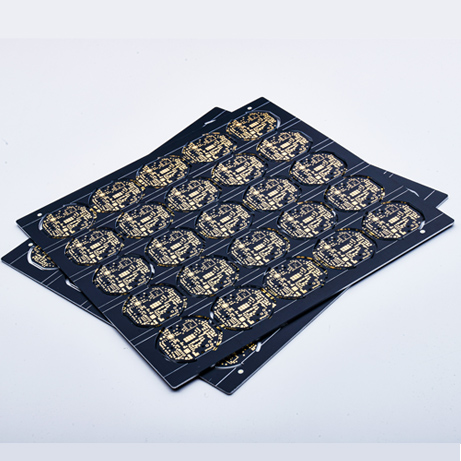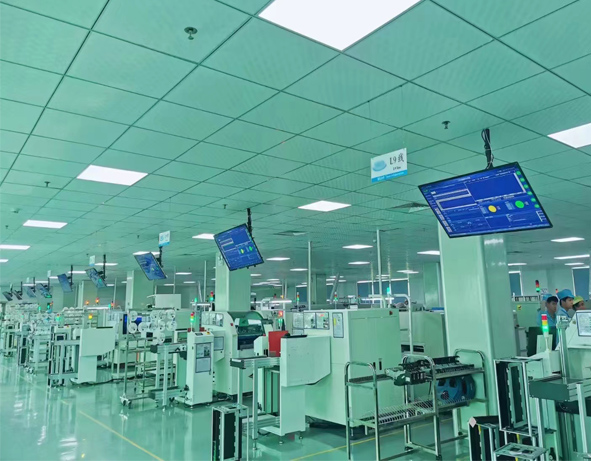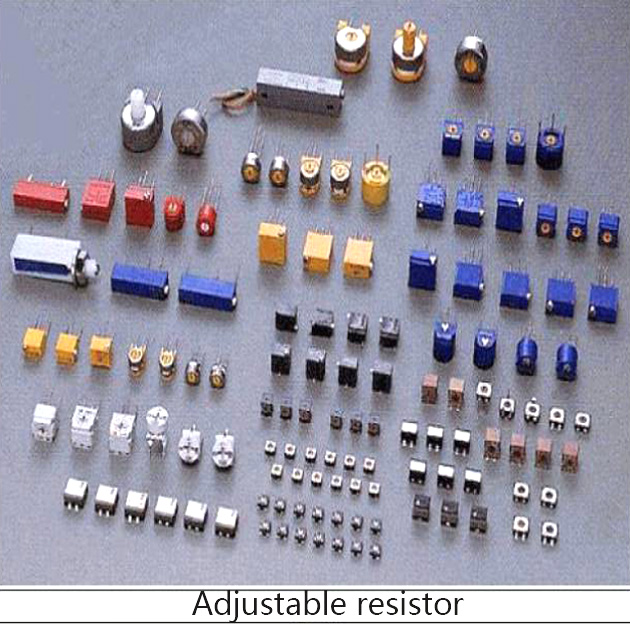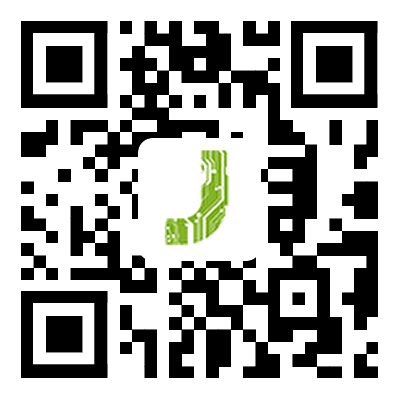 English
English-
 English
English -
 Español
Español -
 Português
Português -
 русский
русский -
 Français
Français -
 日本語
日本語 -
 Deutsch
Deutsch -
 tiếng Việt
tiếng Việt -
 Italiano
Italiano -
 Nederlands
Nederlands -
 ภาษาไทย
ภาษาไทย -
 Polski
Polski -
 한국어
한국어 -
 Svenska
Svenska -
 magyar
magyar -
 Malay
Malay -
 বাংলা ভাষার
বাংলা ভাষার -
 Dansk
Dansk -
 Suomi
Suomi -
 हिन्दी
हिन्दी -
 Pilipino
Pilipino -
 Türkçe
Türkçe -
 Gaeilge
Gaeilge -
 العربية
العربية -
 Indonesia
Indonesia -
 Norsk
Norsk -
 تمل
تمل -
 český
český -
 ελληνικά
ελληνικά -
 український
український -
 Javanese
Javanese -
 فارسی
فارسی -
 தமிழ்
தமிழ் -
 తెలుగు
తెలుగు -
 नेपाली
नेपाली -
 Burmese
Burmese -
 български
български -
 ລາວ
ລາວ -
 Latine
Latine -
 Қазақша
Қазақша -
 Euskal
Euskal -
 Azərbaycan
Azərbaycan -
 Slovenský jazyk
Slovenský jazyk -
 Македонски
Македонски -
 Lietuvos
Lietuvos -
 Eesti Keel
Eesti Keel -
 Română
Română -
 Slovenski
Slovenski
What is PCB SMT PCBA and How are they Related?
2023-04-11
Did you know that almost every gadget or electronic device you use in your daily life has a common basic building block? Almost any electronic device, including your PC, laptop, smartphone, game console, microwave , TV, dishwasher, etc., car charging station, will not work properly without PCB assembly. So what is PCB assembly? JBPCB introduces what are PCB, SMT, PCBA, and what is the relationship between them?
1. PCB (printed circuit board) is the printed circuit board, referred to as the circuit board is the most important electronic components, none of them. Usually on the insulating material, according to a predetermined design, a conductive pattern made of printed circuits, printed components or a combination of the two is called a printed circuit. The conductive pattern that provides electrical connection between components on the insulating substrate is called a printed circuit board (or printed circuit board), which is an important support for electronic components and a carrier that can carry components.

We usually open the computer keyboard to see a soft film (flexible insulating substrate), printed with silver-white (silver paste) conductive graphics and positioning graphics. Because this kind of pattern is obtained by the general screen printing method, we call this printed circuit board flexible silver paste printed circuit board. The printed circuit boards on various computer motherboards, graphics cards, network cards, modems, sound cards and household appliances that we see in the computer city are different.
The substrate it uses is made of paper base (usually used for single-sided) or glass cloth (usually used for double-sided and multi-layered), pre-impregnated phenolic or epoxy resin, and the surface layer is pasted with copper cladding on one or both sides and then laminated and cured. made. This kind of circuit board copper-clad sheet, we call it a rigid board. After making a printed circuit board, we call it a rigid printed circuit board.
A printed circuit board with a printed circuit pattern on one side is called a single-sided printed circuit board, a printed circuit board with a printed circuit pattern on both sides, and a printed circuit board formed by double-sided interconnection through the metallization of the holes, we call it a double-sided board. If a printed circuit board with double-sided inner layer, two single-sided outer layer, or two double-sided inner layer and two single-sided outer layer is used, the positioning system and insulating bonding material are alternated together and The printed circuit board with the conductive pattern interconnected according to the design requirements becomes a four-layer and six-layer printed circuit board, also known as a multi-layer printed circuit board.
2.SMT (abbreviation for Surface Mounted Technology) is one of the basic components of electronic components, called surface mount technology (or surface mount technology), divided into no leads or short leads, which are soldered by reflow soldering or dip soldering The circuit assembly technology of assembly is also the most popular technology and process in the electronic assembly industry at present.

Features: Our substrates can be used for power supply, signal transmission, heat dissipation, and structure provision.
Features: Can withstand the temperature and time of curing and soldering.
The flatness meets the requirements of the manufacturing process.
Suitable for rework work.
Suitable for the manufacturing process of the substrate.
Low dielectric count and high resistance.
JBPCB 's product substrates are healthy and environmentally friendly epoxy resin and phenolic resin, which have good flame-retardant properties, temperature properties, mechanical and dielectric properties, and low cost.
The above mentioned is that the rigid substrate is solid state.
JBPCB 's products also have flexible substrates, which can save space, fold or turn, and move. They are made of very thin insulating sheets and have good high-frequency performance.
The disadvantage is that the assembly process is difficult, and it is not suitable for micro-pitch applications.
JBPCB believes that the characteristics of the substrate are small leads and spacing, large thickness and area, better thermal conductivity, harder mechanical properties, and better stability. The mounting technology on the substrate is electrical performance, reliability, and standard parts.
JBPCB not only has fully automatic and integrated machine operation, but also has the double guarantee of manual auditing, machine auditing and manual auditing. The qualified rate of products is as high as 99.98%.
3.PCBA is the abbreviation of Printed Circuit Board +Assembly in English . It is one of the basic components of electronic components. The PCB goes through the entire process of surface assembly technology (SMT) and the insertion of DIP plug-ins, which is called the PCBA process. In fact, it is a PCB with a piece attached. One is the finished board and the other is the bare board.

PCBA can be understood as a finished circuit board, that is, after all the processes of the circuit board are completed, PCBA can be counted. Due to the continuous miniaturization and refinement of electronic products, most of the current circuit boards are attached with etching resists (lamination or coating). After exposure and development, circuit boards are made by etching.
In the past, the understanding of cleaning was not enough because the assembly density of PCBA was not high, and it was also believed that the flux residue was non-conductive and benign, and would not affect electrical performance.
Today's electronic assemblies tend to be miniaturized, even smaller devices, or smaller pitches. The pins and the pads are getting closer and closer. Today's gaps are getting smaller and smaller, and contaminants may also get stuck in the gaps, which means that relatively small particles, if they remain between the two gaps, may also be Bad phenomenon caused by short circuit.
In recent years, the electronic assembly industry has become increasingly aware and vocal about cleaning, not only for product requirements, but also for environmental requirements and protection of human health. Therefore, there are many cleaning equipment suppliers and solution suppliers, and cleaning has also become one of the main contents of technical exchanges and discussions in the electronic assembly industry.
4. DIP is one of the basic components of electronic components. It is called dual in-line packaging technology, which refers to integrated circuit chips that are packaged in dual in-line packaging. This packaging is also used in most small and medium-sized integrated circuits. form, the number of pins generally does not exceed 100.

The CPU chip of DIP packaging technology has two rows of pins, which need to be inserted into the chip socket with DIP structure.
Of course, it can also be directly inserted into a circuit board with the same number of solder holes and geometric arrangement for soldering.
DIP packaging technology should take special care when inserting and unplugging from the chip socket to avoid damage to the pins.
Features include: multi-layer ceramic DIP DIP, single-layer ceramic DIP DIP, lead frame DIP (including glass ceramic sealing type, plastic packaging structure type, ceramic low melting glass packaging type) and so on.
DIP plug-in is a link in the electronic manufacturing process, there are manual plug-ins, but also AI machine plug-ins. Insert the specified material into the specified position. Manual plug-ins also have to go through wave soldering to solder electronic components on the board. For the inserted components, it is necessary to check whether they are inserted incorrectly or missed.
The post-soldering of DIP plug-in is a very important process in the processing of pcba patch, and its processing quality directly affects the function of pcba board, and its importance is very important. Then post-soldering is because some components cannot be soldered by a wave soldering machine according to the limitations of the process and materials, and can only be done by hand.
This also reflects the importance of DIP plug-ins in electronic components. Only by paying attention to details can it be completely indistinguishable.
In these four major electronic components, each has its own advantages, but they complement each other to form this series of production processes. Only by checking the quality of the production products can a wide range of users and customers realize our intentions. .
Talk about the difference and connection between PCBA, SMT and PCB
1. The Chinese name of PCB has several names such as circuit board, circuit board, printed circuit board, etc. PCB is used to support electronic components and provide circuits, so that a complete circuit can be formed between electronic components. It is a necessary raw material for SMT processing, and it is only a semi-finished product.
2. SMT is a circuit board assembly technology , which is a popular process technology for electronic products . Electronic components are mounted on the PCB empty board through a process, also known as surface mount technology.
3、PCBA is a kind of processing service perfected on the basis of SMT . PCBA refers to the processing process of one-stop services such as SMT patch, DIP plug-in, testing and finished product assembly after purchasing raw materials and components . It is a service model that provides one-stop service for customers .
After the processing of an electronic product is completed, their order should be PCB→SMT→PCBA. The production of PCB is very complicated, while SMT is relatively simple. PCBA is about one-stop service.
1. PCB (printed circuit board) is the printed circuit board, referred to as the circuit board is the most important electronic components, none of them. Usually on the insulating material, according to a predetermined design, a conductive pattern made of printed circuits, printed components or a combination of the two is called a printed circuit. The conductive pattern that provides electrical connection between components on the insulating substrate is called a printed circuit board (or printed circuit board), which is an important support for electronic components and a carrier that can carry components.

We usually open the computer keyboard to see a soft film (flexible insulating substrate), printed with silver-white (silver paste) conductive graphics and positioning graphics. Because this kind of pattern is obtained by the general screen printing method, we call this printed circuit board flexible silver paste printed circuit board. The printed circuit boards on various computer motherboards, graphics cards, network cards, modems, sound cards and household appliances that we see in the computer city are different.
The substrate it uses is made of paper base (usually used for single-sided) or glass cloth (usually used for double-sided and multi-layered), pre-impregnated phenolic or epoxy resin, and the surface layer is pasted with copper cladding on one or both sides and then laminated and cured. made. This kind of circuit board copper-clad sheet, we call it a rigid board. After making a printed circuit board, we call it a rigid printed circuit board.
A printed circuit board with a printed circuit pattern on one side is called a single-sided printed circuit board, a printed circuit board with a printed circuit pattern on both sides, and a printed circuit board formed by double-sided interconnection through the metallization of the holes, we call it a double-sided board. If a printed circuit board with double-sided inner layer, two single-sided outer layer, or two double-sided inner layer and two single-sided outer layer is used, the positioning system and insulating bonding material are alternated together and The printed circuit board with the conductive pattern interconnected according to the design requirements becomes a four-layer and six-layer printed circuit board, also known as a multi-layer printed circuit board.
2.SMT (abbreviation for Surface Mounted Technology) is one of the basic components of electronic components, called surface mount technology (or surface mount technology), divided into no leads or short leads, which are soldered by reflow soldering or dip soldering The circuit assembly technology of assembly is also the most popular technology and process in the electronic assembly industry at present.

Features: Our substrates can be used for power supply, signal transmission, heat dissipation, and structure provision.
Features: Can withstand the temperature and time of curing and soldering.
The flatness meets the requirements of the manufacturing process.
Suitable for rework work.
Suitable for the manufacturing process of the substrate.
Low dielectric count and high resistance.
JBPCB 's product substrates are healthy and environmentally friendly epoxy resin and phenolic resin, which have good flame-retardant properties, temperature properties, mechanical and dielectric properties, and low cost.
The above mentioned is that the rigid substrate is solid state.
JBPCB 's products also have flexible substrates, which can save space, fold or turn, and move. They are made of very thin insulating sheets and have good high-frequency performance.
The disadvantage is that the assembly process is difficult, and it is not suitable for micro-pitch applications.
JBPCB believes that the characteristics of the substrate are small leads and spacing, large thickness and area, better thermal conductivity, harder mechanical properties, and better stability. The mounting technology on the substrate is electrical performance, reliability, and standard parts.
JBPCB not only has fully automatic and integrated machine operation, but also has the double guarantee of manual auditing, machine auditing and manual auditing. The qualified rate of products is as high as 99.98%.
3.PCBA is the abbreviation of Printed Circuit Board +Assembly in English . It is one of the basic components of electronic components. The PCB goes through the entire process of surface assembly technology (SMT) and the insertion of DIP plug-ins, which is called the PCBA process. In fact, it is a PCB with a piece attached. One is the finished board and the other is the bare board.

PCBA can be understood as a finished circuit board, that is, after all the processes of the circuit board are completed, PCBA can be counted. Due to the continuous miniaturization and refinement of electronic products, most of the current circuit boards are attached with etching resists (lamination or coating). After exposure and development, circuit boards are made by etching.
In the past, the understanding of cleaning was not enough because the assembly density of PCBA was not high, and it was also believed that the flux residue was non-conductive and benign, and would not affect electrical performance.
Today's electronic assemblies tend to be miniaturized, even smaller devices, or smaller pitches. The pins and the pads are getting closer and closer. Today's gaps are getting smaller and smaller, and contaminants may also get stuck in the gaps, which means that relatively small particles, if they remain between the two gaps, may also be Bad phenomenon caused by short circuit.
In recent years, the electronic assembly industry has become increasingly aware and vocal about cleaning, not only for product requirements, but also for environmental requirements and protection of human health. Therefore, there are many cleaning equipment suppliers and solution suppliers, and cleaning has also become one of the main contents of technical exchanges and discussions in the electronic assembly industry.
4. DIP is one of the basic components of electronic components. It is called dual in-line packaging technology, which refers to integrated circuit chips that are packaged in dual in-line packaging. This packaging is also used in most small and medium-sized integrated circuits. form, the number of pins generally does not exceed 100.

The CPU chip of DIP packaging technology has two rows of pins, which need to be inserted into the chip socket with DIP structure.
Of course, it can also be directly inserted into a circuit board with the same number of solder holes and geometric arrangement for soldering.
DIP packaging technology should take special care when inserting and unplugging from the chip socket to avoid damage to the pins.
Features include: multi-layer ceramic DIP DIP, single-layer ceramic DIP DIP, lead frame DIP (including glass ceramic sealing type, plastic packaging structure type, ceramic low melting glass packaging type) and so on.
DIP plug-in is a link in the electronic manufacturing process, there are manual plug-ins, but also AI machine plug-ins. Insert the specified material into the specified position. Manual plug-ins also have to go through wave soldering to solder electronic components on the board. For the inserted components, it is necessary to check whether they are inserted incorrectly or missed.
The post-soldering of DIP plug-in is a very important process in the processing of pcba patch, and its processing quality directly affects the function of pcba board, and its importance is very important. Then post-soldering is because some components cannot be soldered by a wave soldering machine according to the limitations of the process and materials, and can only be done by hand.
This also reflects the importance of DIP plug-ins in electronic components. Only by paying attention to details can it be completely indistinguishable.
In these four major electronic components, each has its own advantages, but they complement each other to form this series of production processes. Only by checking the quality of the production products can a wide range of users and customers realize our intentions. .
Talk about the difference and connection between PCBA, SMT and PCB
1. The Chinese name of PCB has several names such as circuit board, circuit board, printed circuit board, etc. PCB is used to support electronic components and provide circuits, so that a complete circuit can be formed between electronic components. It is a necessary raw material for SMT processing, and it is only a semi-finished product.
2. SMT is a circuit board assembly technology , which is a popular process technology for electronic products . Electronic components are mounted on the PCB empty board through a process, also known as surface mount technology.
3、PCBA is a kind of processing service perfected on the basis of SMT . PCBA refers to the processing process of one-stop services such as SMT patch, DIP plug-in, testing and finished product assembly after purchasing raw materials and components . It is a service model that provides one-stop service for customers .
After the processing of an electronic product is completed, their order should be PCB→SMT→PCBA. The production of PCB is very complicated, while SMT is relatively simple. PCBA is about one-stop service.
Previous:What is an HDI PCB?
X
We use cookies to offer you a better browsing experience, analyze site traffic and personalize content. By using this site, you agree to our use of cookies.
Privacy Policy



